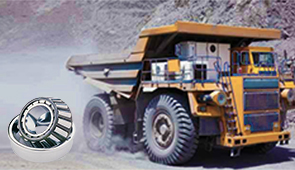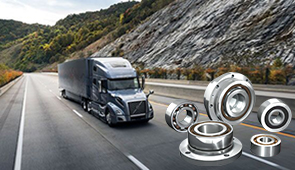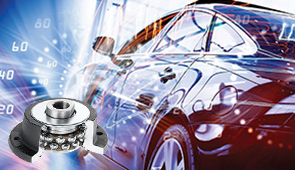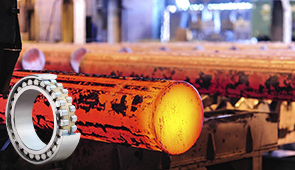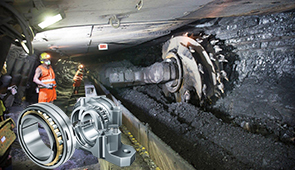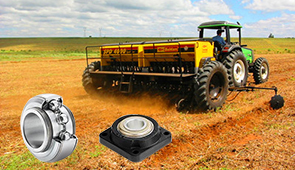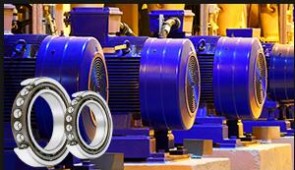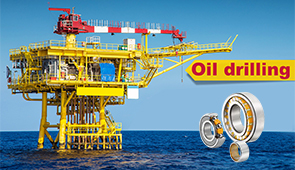Sleeve Bearing vs Ball Bearing: Which is Right for Your Application?
When selecting components for machinery or equipment, the choice between sleeve bearings and ball bearings is a critical consideration. Each bearing type offers distinct advantages and limitations, which can significantly impact performance, longevity, and efficiency in various applications. This article provides a detailed comparison of sleeve bearings and ball bearings, examining their structural differences, operating principles, and suitability for specific use cases. Whether you’re designing high-speed rotating machinery or low-friction, high-load systems, understanding the characteristics of these bearings will help you make an informed decision tailored to your application’s requirements.
What are sleeve bearings and ball bearings?
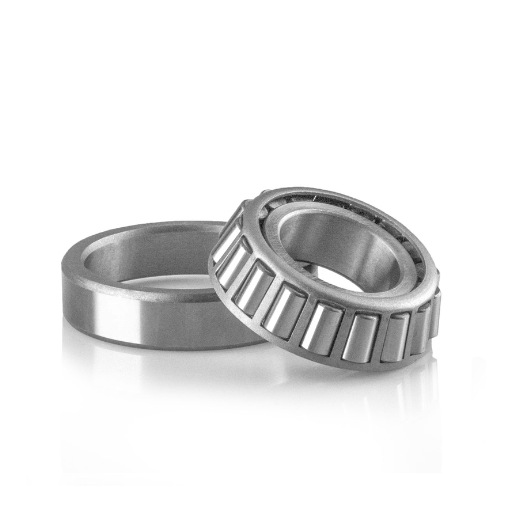
Understanding the type of bearing
Also called as plain bearings, sleeve bearings are constructed with bronze, plastic, or even composite materials. They function by having an interaction in the form of sliding friction. The bearing material is specially designed to reduce friction. Having no moving parts makes this type of sleeve bearing inexpensive with a long lifespan. The preferred applications are those with high load and low speed. Typical technical parameters of sleeve bearings include a maximum load range from 1000 to 5000 psi and an above surface speed of 150 feet per minute, depending on the material composition.
Ball bearings have good specifications for high rotational applications. They allow rotation or axial motion with very minimal friction, thanks to the rolling elements (balls) that allow the bearing to be easily set within the raceway. The low rolling resistance makes them ideal for high-speed applications, and the ability to take both radial and axial load increases the efficiency even more. They usually have a max speed rating of 500,000 RPM, which is dependent on the size and lubrication. The ball bearing can also support radial loads up to several thousands of sounds, which depends on the design and material.
With these technical characteristics and distinctions in mind, I will be able to carefully select the most suitable bearing type depending on the operational conditions, like speed, load capacity, and even environmental conditions.
Key differences between sleeve bearing vs ball bearing
The distinctions between sleeve bearings and ball bearings stem from their design, operational features, and the context in which they are best used. Sleeve bearings function by gliding while a thin film of lubricant separates the surfaces in motion. They are good for low to moderate-speed applications and usually need little to no maintenance. Their operation typically features a greater load-carrying capacity compared to similarly sized ball bearings and lower noise during functioning. For instance, sleeve bearings are capable of sustaining heavy radial loads from hundreds to thousands of pounds based on the material and lubrication used but are largely limited in rotational speeds at around 1,000 to 3,000 RPM.
In contrast, ball bearings have higher speed capabilities because they use rolling parts to lessen friction and are intended for precision work. With proper lubrication and materials like steel or ceramic, they can achieve incredible rotational speeds of 500,000 RPM. Although their radial load capacity is usually less than that of similar-sized sleeve bearings, ball bearings are highly effective in dynamic uses with low starting torque and great performance at high speeds.
These distinctions imply that ball bearings are usually used in high-speed and precision systems such as electric motors and machine tools; sleeve bearings, however, are more commonly employed in heavy-duty applications where noise and maintenance issues pose greater concern. By analyzing an application’s operational load, speed, and environmental factors, I can make sound and reasonable decisions between the two types of bearings.
How do sleeve bearings work?
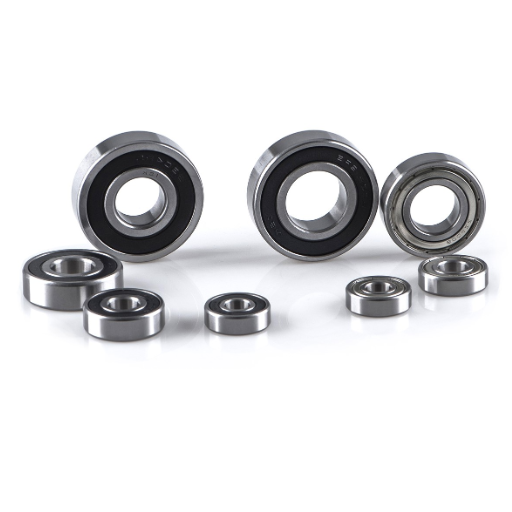
Structure of a sleeve bearing
Shleves bearings, or plain bearings, are a type of a bearing defined by two surfaces of relative motion, one of which is cylindrical to facilitate rotation along its shaft. It usually has the following parts:
- Bearing Material: Sleeve bearings may be made of bronze and brass or some polymer materials such as PTFE due to their good resistance to wearing out as well as having very low coefficients of friction. Sintered bronze and composite alloys also offer good durability for high-load applications.
- Inner Diameter (ID) and Outer Diameter (OD): Sleeve bearings require good tolerances because their dimensions would directly affect fitting and loading. Most bearing houses claim that for ID and OD tolerances, they satisfy ISO and ANSI standards for alignment to the proper fitting and functioning of these bearings.
- Lubrication Layer: Sometimes, sleeve bearings come with self-lubrication features, such as oil-soaked materials, but other times require external lubrication. Lubrication helps reduce damage and increases the life service of the bearing, and its viscosity is usually dependent on the working conditions.
- Clearance: Like other types of bearings, sleeve bearings are set up with clearance between the bearing and the shaft as part of the design. This clearance serves the purpose of thermal expansion, the flow of lubricant, and mechanical motion. These clearances usually fall between 0.001 to 0.005 inches, depending on the application.
- Housing: Maintains a secure housing, which keeps the bearing in a firm position while ensuring alignment and stability. Heavy-duty applications frequently employ materials like cast iron or steel.
Even under severe conditions, such as sustained operation at high loads, these constituents function reliably, resist motion-induced wear, and ensure smooth operation. These constituents must be properly selected and maintained to optimize the sleeve bearing’s efficiency and service life.
The role of lubrication in sleeve bearings
Bearing sleeves can rotate smoothly, effectively, and for long periods when lubricated properly because it reduces friction, dissipates heat, and prevents metal from contact with metal. Uninterrupted lubrication facilitates functionality by generating a thin layer that separates the moving surfaces, thereby increasing wear life while decreasing additional maintenance. Oil baths, grease application, and external circulation systems are examples of lubrication, and each method is chosen according to the bearing’s operating conditions.
- Lubricant’s viscosity: Lubricants’ viscosity should be selected depending on the working speed and load. In the case of low-speed, high-load working conditions, there is a need for high viscosity lubricant that will sufficiently maintain film thickness. The opposite is true for high-speed systems; a lower viscosity lubricant is more appropriate.
- Operating temperature range: Ensure that the effective temperature range of the lubricant aligns with the system’s environment, as negative surfaces, such as excessive heating, can bore deeper into its properties over time.
- Film thickness (h): A measurement often described as hydrodynamic lubrication must have adequate thickness that is useable micrometer. To avoid asperity contact, a desirable value to strive for is 1-3 micrometers.
- Oil clearance: Sleeve and shaft wear and tear are directly linked to proper clearance oiling the bearings; the ratio must ensure unobstructed feeding of lubricant. Conventional machining delivers an accuracy in the range of 0.001-0.005 inches, which is the level at which typical wear for parts is achieved.
Regular checks on these factors and timely updates, for example, replenishing or changing lubricants, can allow the sleeve bearing to function adequately, even under extreme operational environments.
How do ball bearings function?
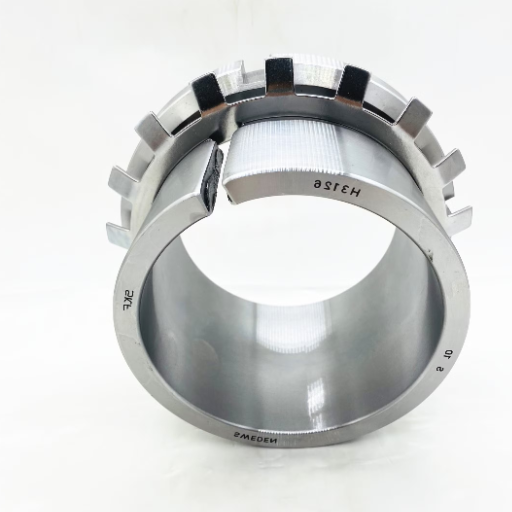
Components of ball bearings
In short, bearings are made up of several parts that are necessary for their function. The main components are:
- Balls: round components usually made of high-quality steel, ceramic, or other materials that allow frictional motion by rolling. Their accuracy can vary with tolerances sometimes as low as ±0.001 inches, which allows for all parts to move seamlessly together.
- Inner and Outer Races: The annular rings that provide the raceway track for the balls of the rolling element bearing. The inner is fixed to the rotating shaft, and the outer is fixed inside the housing. Generally,y both races are produced with high accuracy and often face Ra 0.02 – 0.05 micrometers, ensuring smooth contact and long life.
- Cage: This component is designed to maintain proper spacing between the balls and restrict their collision whilst in motion. It is made of different materials like steel, brass, and nyl, which are chosen depending on the expected load and the operating temperatures.
- Lubrication: This refers to grease or oil that is applied to the item to reduce wear, heat and prevent corrosion. Depending on the operational speed and imposed load, the kinematic viscosity of the lubricant rated in centistokes (cSt) is chosen (ISO VG 68 for medium loads).
- Seals and Shields: These components help avert contamination and retain lubricant. Seals provide greater protection in dusty or wet conditions, while shields provide average protection in moderate speeds due to reduced contact friction.
The aforementioned accomplishes the mitigation of radial and axial loads with great speed and efficiency while attending to the friction and wear suffered. Each component’s design and construction are dictated by defined application requirements, which include operational speed, load capacity, and external conditions.
Advantages of ball bearings over sleeve bearings
Ball bearings provide several advantages over sleeve bearings, especially in areas of precision and productivity under different conditions. First, the rolling element of ball bearings minimizes the friction therefore, assists in dramatically improving the management of radial and axial loads. Further, due to this rolling design, ball bearings also experience reduced starting and operating torque, which renders them suitable for high-speed practices.
Moreover, ball bearings enable efficient performance in processes where a higher accuracy of rotation is needed, coupled with reduced heat emission during prolonged endless operations. Ball bearings are also able to perform at extreme range in terms of temperature and speed, which increases an environment’s demand reliability. For example, depending on the size and material, ball bearings can provide speeds greater than 200,000 RPM while low friction coefficients of approximately 0.001 to 0.005 are maintained.
Through material choice and lubrication requirements, seal and shield designs make ball bearings more durable, allowing resistance to wear and contamination as well as misalignment. With appropriate lubrication, ball bearings experience less wear and can endure high stress, thereby extending service life compared to sleeve bearings, which are heavily dependent on lubrication to reduce direct surface contact.
When deficiencies in energy losses, precise alignment, and durability are concerned, ball bearings opt to be the best choice. They often possess very precise technical specifications, such as load ratings, speed ratings, and material properties that are engineered to suit the complex requirements of contemporary mechanical systems.
What are the differences between sleeve and ball bearings?
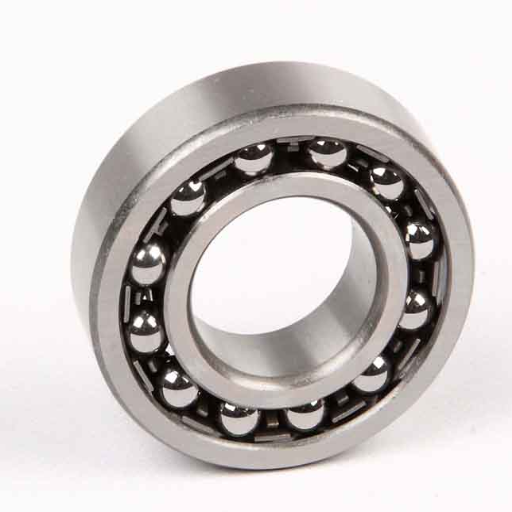
Comparing friction and lubrication needs
The differences in the friction and lubrication requirements of sleeve bearings and ball bearings have implications for their applications. Sleeve bearings, which mainly operate in a sliding motion, require lubrication to reduce surface friction. They demonstrate increased initial frictional ratios, as there is surface contact. The lubricant also helps in cooling, lowering the rate of wear, and smoother functioning, but the performance is dependent on an ideal lubrication film being present.
In contrast, ball bearings achieve lower friction due to their rolling elements having point contact with raceways, unlike sleeve bearing, which depends on friction of the surface. While sleeve bearings may have an approximate friction coefficient of 0.01 to 0.02, ball bearings tend to have a lower index ranging between 0.001 to 0.003. In addition to that, ball bearings also require less lubricant, which further leads to lower maintenance tasks, especially with the use of sealed and pre-lubricated bearings.
It follows that load capacity, temperature, and rotational speed will determine what type of bearing to use. In addition to that, ball bearings are often used in applications with high rotational speeds because of the reduced friction and lubrication compared to sleeve bearings, which are most usable for low-speed-high load movement due to better load distribution and support.
Radial and axial loads in sleeve vs ball bearings
The functional features and design structures of bearings account for the differences in radial and axial load capacities for sleeves and ball bearings. Due to their large surface area, sleeve bearings are good at carrying high radial loads. However, the ability to carry axial loads is limited because there are no systems that can counter axial loads. On the other hand, ball bearings are able to cater to both radial and axial loads because of the point contact of balls with raceways. This allows efficient performance under combined loading.
- Radial Load (Sleeve Bearings): Ideal for low-speed, heavy-weight uses because the surface area supports higher radial load. Extreme limits are dictated by the material makeup and the quality of lubrication.
- Axial Load (Sleeve Bearings): Little capability due to the axial retention features that are mechanical.
- Radial Load (Ball Bearings): Quite sufficient for dynamic high-speed systems, although for the same size, capacity is lesser compared to sleeve bearings.
- Axial Load (Ball Bearings): Capacity is mild to great depending on the type of bearing, i.e., single-row or angular contact, along with pressure or preload configuration.
The decision is best made by the balance of operational aspects like speed, direction of the load, environment, as well as the bearing’s feature.
How to choose the right bearing type for your needs?
Assessing the cooling fan requirements
Determining the appropriate bearing type for a cooling fan begins with an analysis of its operational parameters and environmental conditions. Key factors to consider include:
- Rotational Speed (RPM): High-speed applications often favor ball bearings due to their ability to handle rapid movement with reduced friction compared to sleeve bearings.
- Load Types and Magnitude: Evaluate whether the application involves primarily axial, radial, or a combination of loads. For instance, ball bearings with angular contact are better suited for significant axial loads, while sleeve bearings are ideal for moderate radial loads under low-speed conditions.
- Operating Temperature: Identify the thermal range of the application. Sleeve bearings often perform better in environments with minimal temperature variations, whereas specific ball bearing types are designed to handle a broader temperature range.
- Noise and Vibration Tolerance: For low-noise requirements, such as in office spaces or residential environments, sleeve bearings are advantageous due to their quieter operation under moderate conditions.
- Lifespan and Maintenance Needs: Ball bearings typically offer a longer operational lifespan in high-speed and heavy-load scenarios but require periodic lubrication and maintenance. Sleeve bearings, on the other hand, may have shorter lifespans under high-stress factors but involve simpler maintenance.
This assessment provides critical insights into the operational alignment between the cooling fan’s requirements and the technical capabilities of the bearing types available.
Cost considerations between sleeve bearing vs ball bearing
To identify the kind of bearing needed for a cooling fan, assess its working parameters with context to its surroundings. Some of the more prominent points to remember include:
- Rotational Speed (RPM): In most high-speed scenarios, the use of ball bearings is most favorable as its ability to cope with fast movement surpasses sleeve bearings’ in friction-free settings.
- Load Types and Magnitude: Consider the nature of most loads in the use case. Is it mainly axial, radial, or a hybrid of both? For example, low-speed, sleeve-bearing supporting cases with moderate radial loads are best suited for using ball bearings with angular contact for high axial load cases.
- Operating Temperature: What is the thermal range of the application? Sleeve bearings as a whole are most suited for areas of minimal temperature changes, whereas certain types of ball bearings are designed to endure a larger range of temperatures.
- Noise and Vibration Tolerance: In cases where noise is kept to a minimum, such as in offices or homes, sleeve bearings are most ideal due to their moderate working conditions, enabling significantly quieter operations.
- Lifespan and Maintenance Needs: In most high-speed, high-load cases, ball bearings are expected to last longer while needing maintenance and lubrication. While Sleeve bearings may not perform as well under those strenuous conditions over time, maintenance as a whole is more straightforward.
This assessment sheds light on the operational alignment of the cooling fan’s requirements to the available bearing types’ technological features.
Frequently Asked Questions (FAQs)
Q: What are the main differences between ball bearing and sleeve bearing?
A: Ball bearings and sleeve bearings differ mainly in design and application. Ball bearings use spherical balls to minimize friction and can handle both radial and axial loads, making them suitable for high-speed applications. Sleeve bearings, also known as plain bearings, rely on a cylindrical sleeve to provide smooth motion and are typically used in low-speed, high-load applications where quiet operation is important.
Q: How do ball bearings and sleeve bearings compare in terms of noise level?
A: Ball bearings generally produce more noise compared to sleeve bearings due to the rolling action of the balls. Sleeve bearings, with their smooth sliding surface, offer quieter operation, making them ideal for applications where the noise level is a concern.
Q: In which applications are sleeve bearings generally used?
A: Sleeve bearings are generally used in applications requiring quiet operation and low-speed performance, such as household fans, small motors, and appliances. Their simple design and low maintenance requirements make them suitable for these scenarios.
Q: What are the key features of ball bearings compared to sleeve bearings?
A: Ball bearings offer high-speed capabilities and can support both radial and axial loads, making them versatile for various applications. In contrast, sleeve bearings are simpler in design, provide quieter operation, and are generally used in low-speed applications.
Q: Are sleeve bearing fans better than ball bearing fans?
A: Sleeve bearing fans provide quieter operation and are ideal for low-speed applications, while ball bearing fans are better for high-speed, longer-lasting applications. The choice between the two depends on the specific application requirements, such as speed, noise, and longevity.
Q: What role does bearing manufacturing play in the performance of bearings?
A: Bearing manufacturing is crucial for the performance and reliability of bearings. High-quality manufacturing processes ensure precision and durability, reducing the risk of failure and extending the life span of a bearing, whether it’s a ball bearing or a sleeve bearing.
Q: Can ball bearings be used in all the same applications as sleeve bearings?
A: While ball bearings can be used in many of the same applications as sleeve bearings, they are not always the best choice. Ball bearings are better suited for high-speed and high-load applications, while sleeve bearings are preferred for low-speed, noise-sensitive applications.
Q: What are the advantages of using ball bearings in fan mounting?
A: Ball bearings are advantageous in fan mounting due to their ability to handle higher speeds and loads, providing longer life span and reliability compared to sleeve bearings. Fans with ball bearings are often used in environments where durability and performance are critical.
Q: What types of bearings are commonly used in axial fans?
A: Both ball bearings and sleeve bearings are commonly used in axial fans. Ball bearings are preferred in high-performance fans for their speed and load-handling capabilities, while sleeve bearings are chosen for quieter, low-speed fan applications.
UCTH213-40J-300 with Setscrew(inch)
CNSORDERNO: Normal-duty(2)
TOGN: UCTH213-40J-300
SDI: B-R1/8
SD: 2 1/2
UCTH212-39J-300 with Setscrew(inch)
CNSORDERNO: Normal-duty(2)
TOGN: UCTH212-39J-300
SDI: B-R1/8
SD: 2 7/16
UCTH212-38J-300 with Setscrew(inch)
CNSORDERNO: Normal-duty(2)
TOGN: UCTH212-38J-300
SDI: B-R1/8
SD: 2 3/8
UCTH212-36J-300 with Setscrew(inch)
CNSORDERNO: Normal-duty(2)
TOGN: UCTH212-36J-300
SDI: B-R1/8
SD: 2 1/4
UCTH211-35J-300 with Setscrew(inch)
CNSORDERNO: Normal-duty(2)
TOGN: UCTH211-35J-300
SDI: B-R1/8
SD: 2 3/16
UCTH211-34J-300 with Setscrew(inch)
CNSORDERNO: Normal-duty(2)
TOGN: UCTH211-34J-300
SDI: B-R1/8
SD: 2 1/8









